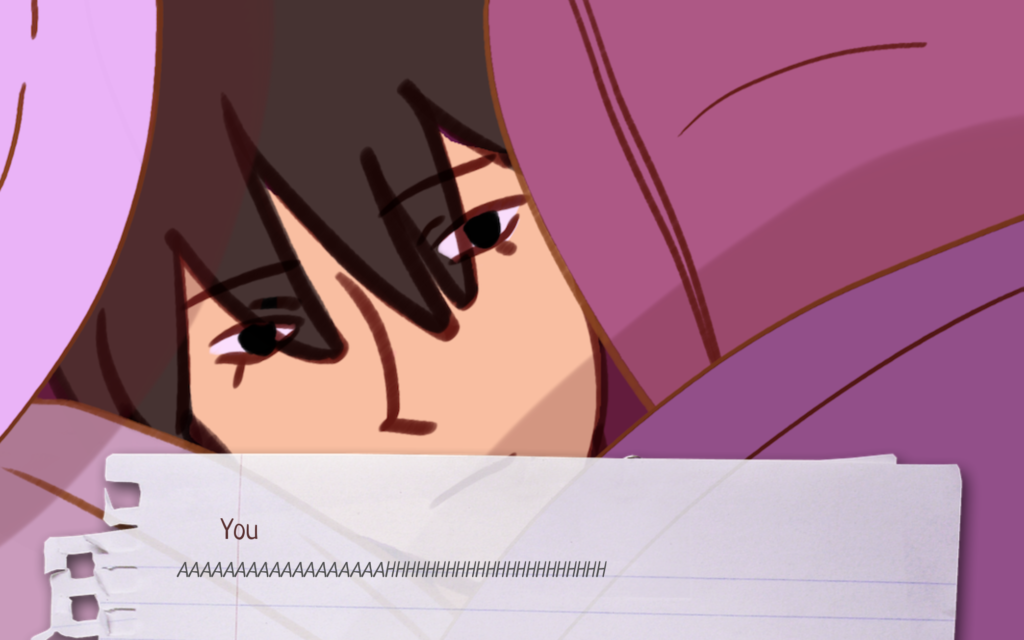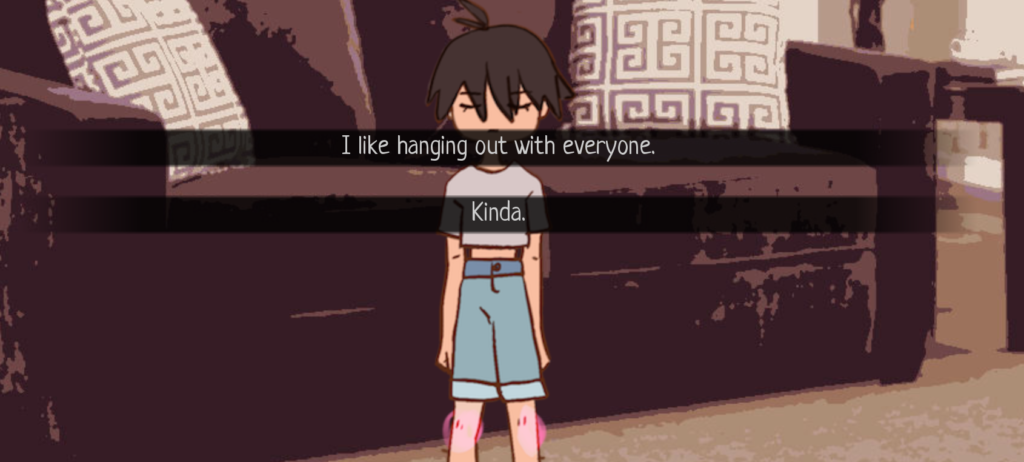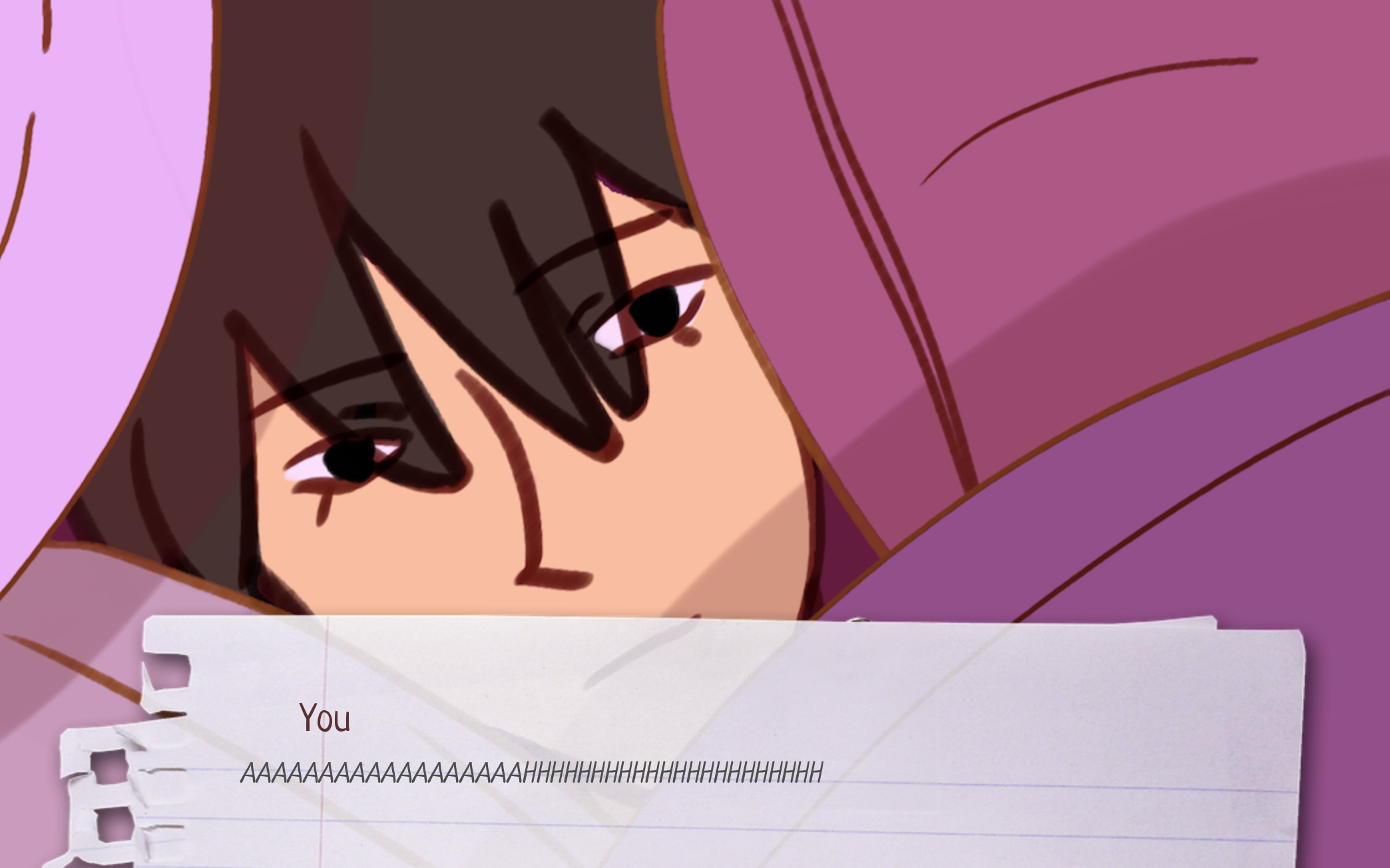Dungeons and Lesbians is the first dating simulator I had ever played for myself, but I had a lot of preconceptions about this form of game prior to playing. Since this dating sim is oriented towards the LGTBQ+ community, I was curious whether the game would allow me to play an asexual or aromantic route, a route where I could actively choose friendship over a romantic relationship without the implication of being straight. I had the impression that for most dating simulators, no matter how much you resisted getting into a relationship, the game would inevitably set you up on a particular route.
Dungeons and Lesbians seemed like a perfect play space to experiment with challenging the dating sim form, whilst simultaneously investigating the extent of which other sexualities were represented in the game. While the name of the game suggests that the sexuality of my avatar was predetermined, my course of play uncovered some interesting ways in which Dungeons and Lesbians allows you to “lose” (ie. end up with none of the girls).
When I first loaded the game, the androgynous character design of Jimothy initially made me believe that all of the engagement actions I took in this game would set me up to date a girl. However, when it was revealed that Jimothy identified as a man, I ended up using his character as a way to avoid committing to a route with one of the other girls. When the player does not devote time to a particular girl, the game uses Jimothy to give the player a hint to focus on finding out more about one person. If the player continues to not focus on any one girl, they unlock one of Jimothy’s endings.

In the ending I got during my first play, all of the other friends left and I ended up going to sleep on the couch. Suddenly Jimothy appears, in a comedic reveal. While this ending does not imply any romantic relationship with Jimothy, this particular finale felt like I had “lost” the game rather than actively chosen this route.

I was curious about whether this was the only non-romantic route I could take in the game, so I tried replaying the game, taking a slightly different route while still focusing on Jimothy. I chose to only talk to Jimothy and not spend time with any of the other characters when given the opportunity. Through this, I was able to unlock what I would consider Dungeons and Lesbians‘ aromantic route. Similar to the other ending, the player does not go with any one girl and chooses to sleep on the couch. Jimothy comes up to us and the player has a conversation with him, where he double-checks that the player does not want to get to know any one girl better. When the player indicates that they like spending time with everyone, the game supports our choice and we receive unique dialogue about us maintaining and treasuring the friendships we have without pursuing any of the girls.

I think the inclusion of this ending in a dating sim validates this mode of play and also offers support and representation for other non-heteronormative sexualities.


The designer’s choice of including Jimothy in this game is interesting. Normally in other dating sims, the player is assumed to be pursuing other characters designed to be either charming, attractive, or mysterious. The games are mostly about fulfilling the player fantasy–getting attractive people to fall in love with “me” which could be seen often in Japanese harem games or anime. Yet for Dungeons and Lesbians, it seems to be breaking this assumption that people are playing this game in order to develop romantic relationships with characters designed to be attractive intentionally. Jimothy is such an interesting character that he not only gives the player subtle information about the other three girls but also allows the player to reach a simple non-romantic ending with him. It expands the genre of dating sims in a way that the players are no longer forced to pursue one of the characters but could maintain a non-romantic relationship that is encouraging as well.
I love the inclusion of the positive aro/ace ending, since oftentimes in dating sims, it’s seen as a ‘bad end’ when ‘failing’ to get with any of the other characters. As you said, the inclusion of this ending and expressing it in a joyful and satisfying light extends the dating sim genre to express more than the need for romantic connections.
I too think the inclusion of the positive “aroace” ending is telling and laudable, but I actually think the inclusion of multiple such endings (crucially, including failure states) is the more powerful statement. Not only does it send the message to the player that that they can play this game however feels right to them, but also that their choice doesn’t detract from their self-determination: they’re still playing the game on the same terms as everyone else. That can still fail; they can still succeed. Now THAT’S inclusivity.
This is really interesting and something I haven’t thought about previously as I’m not personally ace, but it has me thinking about other ways to be inclusive in a dating sim. Stereotypically, we are asked to choose one of the characters and romance them but I am curious if a polyamorous end could also be built in and if that would require more work (double the choices) on the player’s part. Seeing as there would need to be more context and more awareness between the 2 characters in the game that we choose, this could be another interesting way to expand the playability of dating sims. I do see, however, how this could turn into a new fail state if you didn’t romance one character enough which is not how polyamory actually works, obviously. This might require higher thresholds of successful dialogue to really show the intentionality behind the polyamorous decision – this is a really interesting idea to think about though and would love to see how, if at all, it has been done.